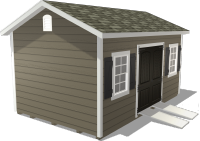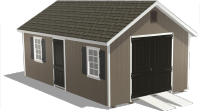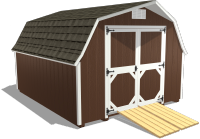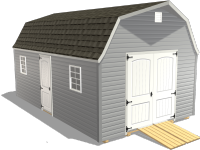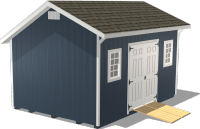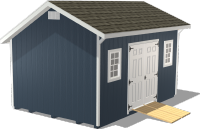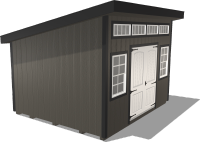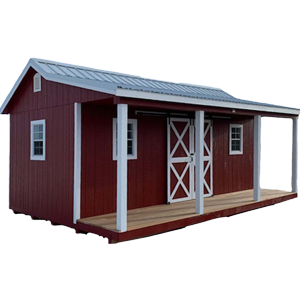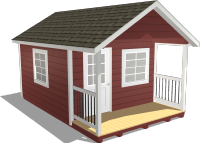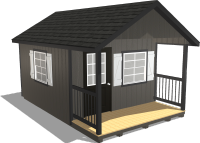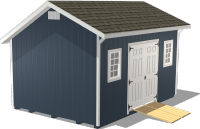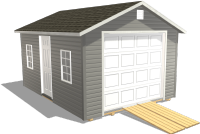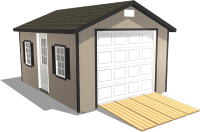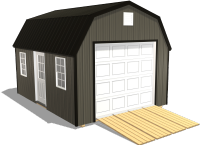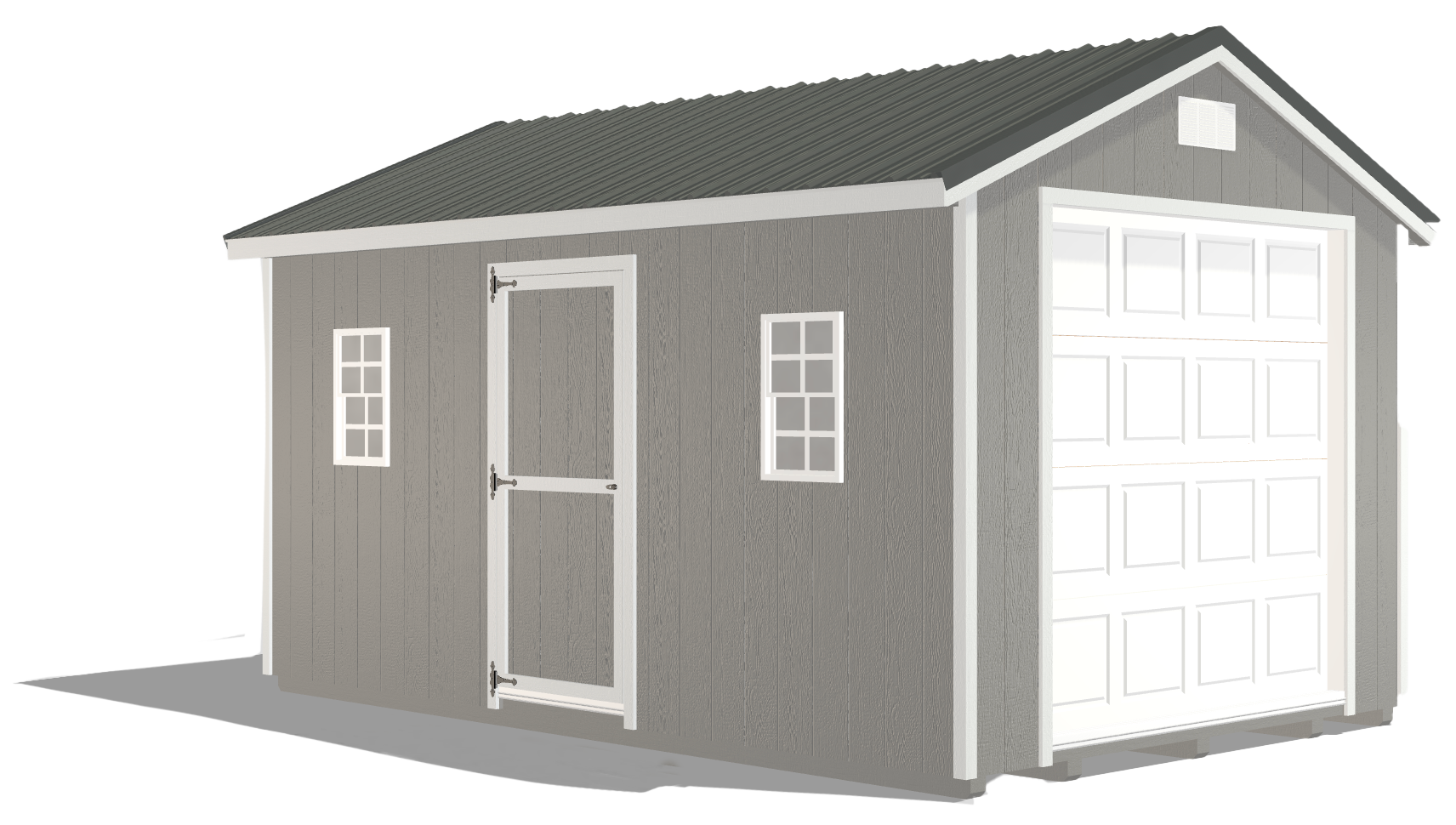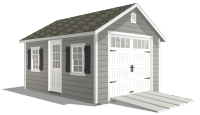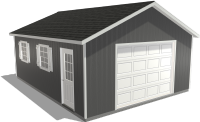Efficient Greenhouse Growing: Embrace Vertical Gardening Solutions
by Dakota Storage Buildings, on November 18, 2024

Greenhouses provide an excellent environment for growing a wide variety of plants year-round, but maximizing space efficiently can help you get even more out of your setup. Vertical gardening with a greenhouse is a creative way to expand your growing area by utilizing walls, shelves, and other vertical surfaces. This allows you to cultivate more plants without taking up additional floor space. This approach optimizes your greenhouse, enhances air circulation, makes maintenance easier, and increases your overall yield. Let’s dive into the benefits of vertical gardening and best practices to help you make the most of your greenhouse space.
Optimize Space and Boost Plant Health With Vertical Gardening
Vertical gardening is an efficient way to optimize your greenhouse space by utilizing vertical surfaces for growing plants. Instead of spreading plants across the floor, you can grow them upwards on walls, shelves, or towers, effectively doubling or even tripling your growing capacity. This method reduces the risk of disease and promotes healthier plants by ensuring there is proper air circulation. With plants spaced vertically, air can flow freely around them, helping to prevent mold, mildew, and pests that often thrive in stagnant, overcrowded environments.
Additionally, vertical gardening with a greenhouse makes maintenance easier. With plants arranged vertically, you can access them without bending or reaching into crowded areas, simplifying watering, pruning, and harvesting. The vertical layout also makes it easier to monitor plant health, spot issues early, and address them promptly. It allows for a greater variety of plants within a confined area, enabling you to grow more diverse crops without the constraints of traditional horizontal gardening. By incorporating vertical gardening into your greenhouse, you can increase yields, enhance plant health, and create a more organized and visually appealing space that is easier to manage.
Choosing the Best Vertical Gardening Systems for Your Plants
Multiple different vertical gardening systems suit different types of plants and greenhouse setups. Here’s an overview of some popular options.
Shelving Units
Shelving units are ideal for stacking potted plants vertically, giving you easy access to each plant. They are perfect for growing herbs, small flowers, or seedlings and can be customized to fit your greenhouse layout. Shelves can be made from various materials, such as wood or metal, and are a great option for keeping plants at different levels to maximize light exposure. Consider using adjustable shelving to accommodate various plant heights and ensure each plant gets the light and space it needs to thrive.

Trellises and Stakes
Trellises and stakes are excellent for vining plants like tomatoes, cucumbers, and beans. These supports guide the plants upward, keeping them off the ground and away from pests. Trellises can be attached to greenhouse walls or positioned as freestanding structures, giving you more flexibility in where you place plants. Trellises not only save space but also make harvesting easier, as fruits are elevated and easily visible. Stakes are particularly useful for single-stemmed plants and can be easily moved or adjusted as plants grow.
Wall-Mounted Planters
Wall-mounted planters are a great way to utilize vertical space for smaller crops that do not require much room, such as herbs and leafy greens. These planters can be attached directly to greenhouse walls and are available in various styles, from individual pots to modular systems that can be expanded as needed. Wall planters are also perfect for creating a living wall — a vertical garden that saves space and adds a stunning visual element to your greenhouse.
Hydroponic Towers
Hydroponic towers are an innovative vertical gardening system that maximizes space efficiency and does not require soil. These towers use water-based nutrient solutions to grow plants in vertical columns. Hydroponic towers are ideal for growing leafy greens, herbs, and even some fruits. This direct nutrient delivery system results in faster growth rates and higher yields, making them perfect for gardeners looking to maximize production in a limited space.
Best Vertical Garden Plants to Maximize Your Space
Selecting the right plants is crucial for a successful vertical garden. Here are some of the best options that thrive in vertical setups.

Climbers and Vines
Tomatoes, cucumbers, and beans are excellent choices for vertical gardening in greenhouses due to their natural climbing habits. These plants can be trained to grow up trellises, stakes, or netting, saving ground space while still producing abundant yields. They are perfect for vertical gardening with a greenhouse because they use height instead of ground area, allowing you to grow more plants in the same space.
Fresh Herbs
Herbs like basil, mint, and parsley grow well in vertical gardens because of their compact growth habits. These plants do not require much space and can thrive in wall-mounted planters or small pots on shelves, making them a great addition to vertical gardening systems. They also provide fresh flavors to your kitchen and can be harvested regularly to encourage new growth.
Leafy Greens
Lettuce, spinach, and swiss chard are lightweight and adaptable, making them ideal candidates for vertical gardens. These plants grow quickly and can be harvested multiple times, providing a continuous supply of fresh greens. Leafy greens also perform well in hydroponic systems, where they receive ample nutrients and light, ensuring consistent growth and high yields.
4 Tips for Setting Up a Vertical Garden
To set up a successful vertical garden, consider these 4 tips.
![]()
1. Positioning and Stability
Ensure that your vertical gardening structures are positioned securely within your greenhouse. Shelving units should be stable, and trellises or stakes should be anchored firmly to prevent tipping. Place taller structures at the back or sides of the greenhouse to avoid blocking light for other plants. It is important to balance your layout to ensure that all plants receive adequate sunlight, especially those at the lower levels of vertical setups.
![]()
2. Watering and Pruning
Consistent watering is essential for vertical gardens, as plants may dry out faster when grown in smaller containers or elevated positions. Consider installing drip irrigation or self-watering systems to maintain consistent moisture levels. Regular pruning helps control plant growth and prevents overcrowding, ensuring that each plant has enough space and light. Pruning also encourages healthier growth and better yields, because it directs the plant’s energy toward producing fruits and flowers.
![]()
3. Sunlight and Air Circulation
Vertical gardens can create shading effects, so it is crucial to balance sunlight exposure across different levels. Use reflective surfaces like light-colored walls or mirrors to enhance natural light. Adequate air circulation is also key; use fans or ventilation systems to reduce humidity and promote healthy growth. Proper airflow helps prevent mold and fungal diseases, which can be more prevalent in densely planted areas.
![]()
4. Fertilization and Soil Health
Vertical gardening in greenhouses often means using smaller containers, which can cause nutrients to deplete faster. Regularly check the soil or hydroponic nutrient solution and adjust as needed to ensure your vertical gardening plants are getting the nutrients they need. Use high-quality potting mixes or nutrient solutions designed for vertical and container gardening to support healthy growth and strong roots.
Create More Space in Your Greenhouse With Vertical Solutions
Vertical gardening with a greenhouse offers an effective and space-saving solution for maximizing your greenhouse’s potential. By growing plants upward, you can make the most of limited space, improve air circulation, and enjoy a wider variety of crops. Whether you choose shelving units, trellises, wall-mounted planters, or hydroponic towers, vertical gardening can transform your greenhouse into a thriving, efficient, and visually appealing environment. Ready to get started? Explore Dakota’s stock greenhouses and create the perfect setup for your vertical garden today!



